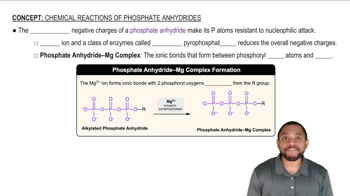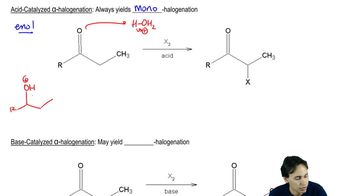Write the mechanism for each of the following reactions:
b. the reaction of benzoyl chloride with excess methylamine to form N-methylbenzamide

 Verified step by step guidance
Verified step by step guidance Verified video answer for a similar problem:
Verified video answer for a similar problem:



 9:32m
9:32mMaster NAS - The Three Rules with a bite sized video explanation from Johnny
Start learning